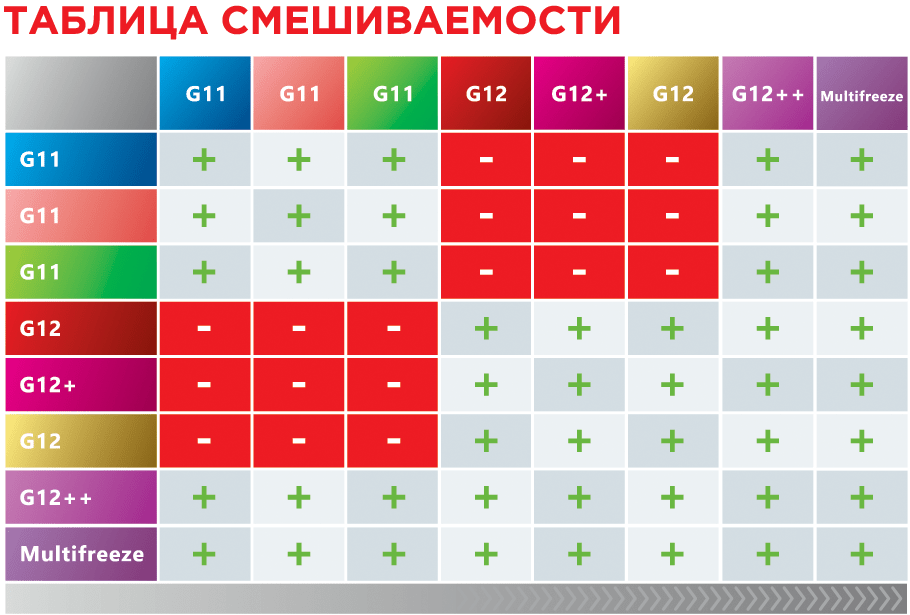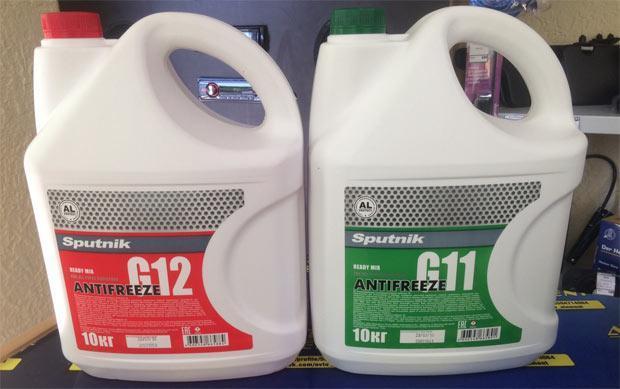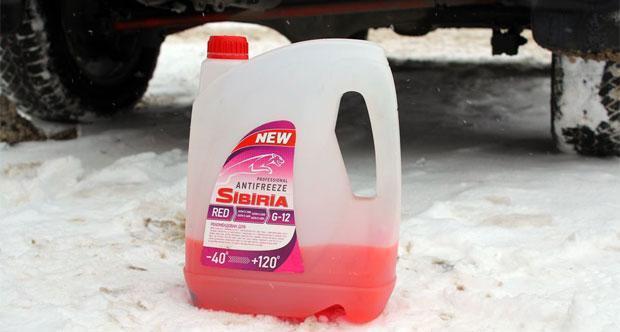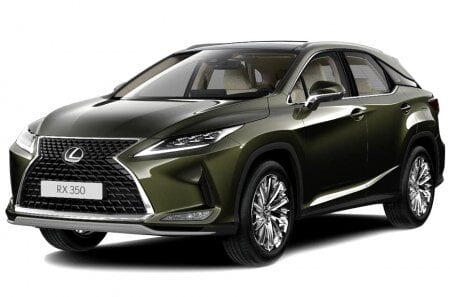
Can I mix G11 and G12 antifreeze?
Antifreeze G11 and G12. What is the difference?
The vast majority of coolants (coolants) for civilian vehicles are made on the basis of dihydric alcohols, ethylene or propylene glycols, and distilled water. Water and alcohol make up more than 90% of the total antifreeze. Moreover, the proportions of these two components may vary depending on the required freezing temperature of the coolant. The rest of the antifreeze is occupied by additives.
G11 antifreeze, like its almost complete domestic counterpart Tosol, also consists of ethylene glycol and water. These antifreezes use inorganic compounds, various phosphates, borates, silicates and other components as additives. Inorganic compounds are proactive: they create a protective film on the walls of the entire cooling circuit already a few hours after being poured into the system. The film levels the aggressive effects of alcohol and water. However, due to the additional layer between the cooling jacket and the coolant, the heat removal efficiency decreases. Also, the service life of class G11 antifreezes with inorganic additives is short and averages 3 years for a quality product.


G12 antifreeze is also created from a mixture of water and ethylene glycol. However, the additives in it are organic. Namely, the main protective component against ethylene glycol aggression in G12 antifreeze is carboxylic acid. Organic carboxylate additives do not form a homogeneous film, so that the intensity of heat removal does not drop. Carboxylate compounds act pointwise, exclusively on the corrosion site after their appearance. This somewhat reduces the protective properties, but does not affect the thermodynamic properties of the liquid. At the same time, such antifreezes serve for about 5 years.
G12+ and G12++ antifreezes contain organic and inorganic additives. At the same time, there are few inorganic additives that create a heat-insulating layer in these coolants. Therefore, G12 + and G12 ++ antifreezes practically do not interfere with heat removal and at the same time have two degrees of protection.


Can G11 and G12 antifreezes be mixed?
You can mix G11 and G12 antifreezes in three cases.
- You can freely fill in instead of the recommended G11 antifreeze with class G12 ++ coolant, as well as mix these two coolants in any proportions. Antifreeze G12 ++ is universal, and if it changes the mode of operation of the cooling system, then it is insignificant. At the same time, the protective properties of this class of coolant are high, and the enriched additive package will reliably protect any system from corrosion.
- Instead of G11 antifreeze, you can fill in G12 + for the same reason described in the first paragraph. However, in this case, there may be a slight decrease in the resource of individual elements of the engine cooling system.
- You can safely add to each other in small quantities, up to 10%, antifreeze brands G11 and G12 (including all their modifications). The fact is that the additives of these coolants do not break down and do not precipitate during interaction, but only on condition that the liquids are initially of high quality and are made in accordance with the standards.


It is allowed, but not recommended, to fill in class G11 coolant instead of G12 antifreeze. The absence of inorganic additives can reduce the protection of rubber and metal components and reduce the service life of individual elements of the system.
It is impossible to fill in coolant class G12 together with the required G11 antifreeze. This will negatively affect the intensity of heat dissipation and can even lead to boiling of the motor.


